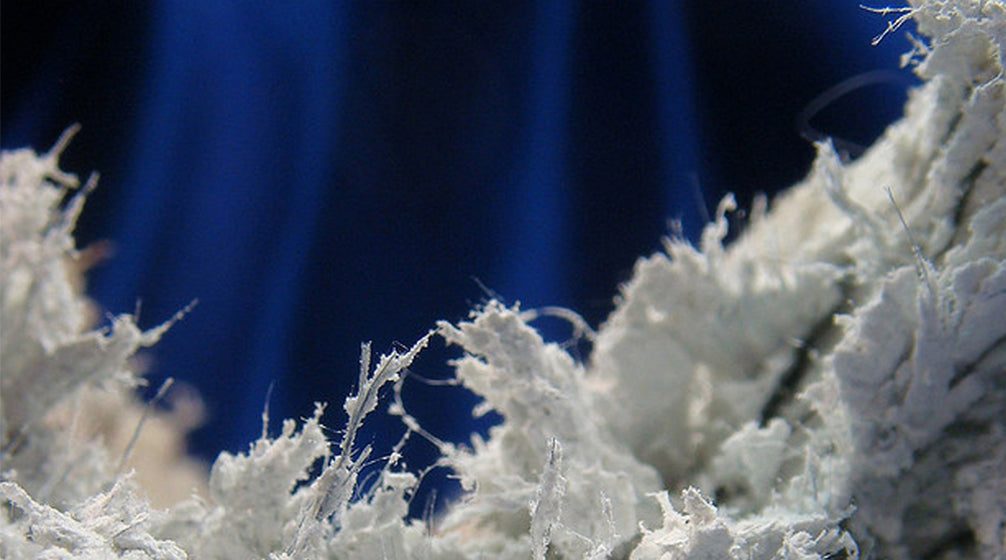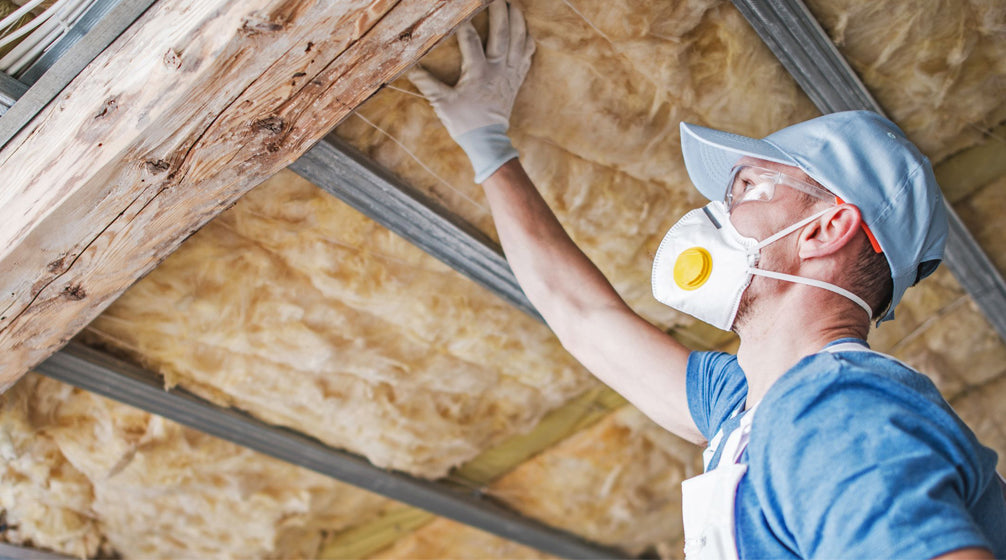Asbestos may sound familiar, but its dangers aren't always well-known. Once praised for its usefulness, it's now linked to serious health issues when its tiny fibers are released into the air.
In this guide, we'll uncover what asbestos abatement is all about. From understanding the definition of asbestos abatement is to learning how to handle it safely - we'll take you through the basics. Whether you're a homeowner or a professional, this guide will help you make informed decisions for a safer environment.
What Exactly Is Asbestos?
Asbestos is a naturally occurring mineral fiber that was once widely used in various building materials due to its durability, fire resistance, and insulation properties. It is composed of six naturally occurring minerals belonging to two mineral families: serpentine and amphibole.

What are the Sources of Asbestos?
Asbestos can be found in various products and materials used in construction and manufacturing processes before its adverse health effects were widely known. Common sources of asbestos include:
Insulation materials such as pipe insulation, attic insulation, and vermiculite insulation.
Building materials like roofing shingles, ceiling tiles, floor tiles, and cement products.
Automotive parts such as brake pads and linings.
Textiles, including fireproof clothing and blankets.
How Many Categories of Asbestos Are There?
There are two main categories of asbestos minerals:
- Serpentine asbestos:This category includes only one type of asbestos: chrysotile. Chrysotile asbestos is characterized by its curly or serpentine fibers and accounts for the majority of asbestos used commercially worldwide.
- Amphibole asbestos:This category includes five types of asbestos: amosite, crocidolite, tremolite, anthophyllite, and actinolite. These asbestos minerals have straight, needle-like fibers and are generally considered to be more hazardous than serpentine asbestos. Amphibole asbestos minerals were less commonly used in commercial applications than chrysotile, but they are associated with higher health risks when inhaled by airborne fibers.
What is Asbestos Abatement?
Asbestos abatement refers to the process of identifying, removing, encapsulating, or otherwise managing asbestos-containing materials to reduce the risk of asbestos exposure and related health hazards. It is a specialized procedure that must be conducted safely and in compliance with relevant regulations and guidelines.
When Should You Perform Asbestos Abatement?
Asbestos abatement should be performed whenever asbestos-containing materials are damaged, deteriorating, or disturbed in a way that could release asbestos fibers into the air. Common scenarios that may necessitate asbestos abatement include:
Renovations or demolition activities that disturb asbestos-containing materials.
Damage to building materials containing asbestos due to water leaks, fire, or other causes.
Routine maintenance or repairs that could potentially disturb asbestos-containing materials.

Who Should Perform Asbestos Abatement Projects?
Asbestos abatement projects should only be undertaken by trained and certified professionals with the necessary expertise and equipment to ensure the safety of workers and occupants. Qualified individuals and companies typically include:
Licensed asbestos abatement contractors.
Certified asbestos inspectors.
Environmental consultants specializing in asbestos management.
How to Clean Asbestos
Cleaning up asbestos requires a meticulous approach to avoid releasing harmful fibers into the air, which could pose serious health risks. Here's a comprehensive guide to safely cleaning asbestos-containing materials (ACM):
1. Assess the Situation
Identify the Material: Determine if the material contains asbestos. If unsure, have it tested by a certified asbestos professional.
Evaluate the Condition: If the ACM is in good condition and not disturbed, it might be safer to leave it and monitor for any future damage. Disturbing intact ACM can release fibers into the air.
2. Plan and Prepare
Limit Access: Restrict entry to the area to prevent accidental exposure.
Wear Appropriate PPE: Personal Protective Equipment (PPE) is crucial. Wear a respirator with a HEPA filter, disposable coveralls, gloves, and safety goggles.
Seal the Area: Use plastic sheeting to seal off the work area, including vents, to prevent asbestos fibers from spreading to other parts of the building.
Post Warning Signs: Clearly mark the area with signs to warn of the asbestos removal work.
3. Wet the Asbestos Materials
Before any removal, lightly mist the ACM with water mixed with a few drops of detergent. This helps to minimize the release of asbestos fibers into the air.
4. Careful Removal
Avoid Breaking the Material: Carefully remove the ACM without breaking it into pieces. Breaking it up can release more fibers.
Tools: Use hand tools instead of power tools to avoid creating asbestos dust.
5. Cleanup
HEPA Vacuum: Use a vacuum equipped with a HEPA filter to clean up any debris or dust. Regular vacuums are unsuitable as they can release fibers into the air.
Wet Wipes: To clean surfaces, use wet wipes or a damp cloth, avoiding dry sweeps or using a regular dustpan and brush.
6. Dispose of Asbestos Waste Properly
Double-Bag Waste: Place asbestos waste, including PPE, in two sealed plastic bags. Label these bags as asbestos waste.
Follow Local Regulations: Dispose of the waste at a facility licensed to handle asbestos. Follow local laws and regulations for asbestos disposal.
7. Decontamination
Before removing protective clothing, wet wipe the suit and gently remove it to avoid shaking off any dust. Always remove the respirator last.
Take a shower immediately after removing PPE to wash off any fibers that may have attached to your skin or hair.
Important Considerations
Never Use Compressed Air: Blowing asbestos with compressed air can make it airborne and highly dangerous.
Avoid Using a Domestic Vacuum Cleaner: Domestic vacuum cleaners cannot filter asbestos fibers and can spread them into the air.
Professional Assistance: For large areas or if the ACM is friable (easily crumbled), it's safest to hire a professional asbestos abatement company. They have the specialized equipment and training to safely remove asbestos without risking health.
How Air Scrubbers Help in Asbestos Abatement
Air scrubbers play a crucial role in asbestos abatement projects by maintaining clean air and ensuring the safety of workers and occupants. These devices are designed to filter and purify the air, removing a wide range of pollutants, including dust, allergens, mold spores, chemical fumes, unpleasant odors, and, most importantly, asbestos fibers.
How Does Air Scrubbers Work?
Air scrubbers work by drawing in contaminated air through a series of filters. The primary filter in these systems is often a High-Efficiency Particle Air (HEPA) filter, capable of trapping particles as small as 0.3 microns—a fraction of the width of a human hair.
This level of filtration is crucial in asbestos abatement, as asbestos fibers are known for their tiny size and ability to remain airborne for long periods. Some air scrubbers also incorporate activated carbon filtration, which neutralizes odors and chemicals, providing a more comprehensive cleaning solution.

Features of Purisystems Air Scrubbers
Purisystems' air scrubbers are lauded for their efficiency in filtering out hazardous particles and providing clean air. These devices boast features such as:
Three-stage filtration system: Ensures that air is thoroughly cleaned at multiple levels, capturing a wide array of airborne contaminants.
Built-in UV lamp sterilization technology: Inactivates viral microorganisms with ultraviolet light, adding an extra layer of purification.
Portability: Allows for flexible use across various locations or job sites, making it ideal for the dynamic environments typical of asbestos abatement projects.
Purisystems Products for Asbestos Abatement
For those involved in asbestos abatement, Purisystems offers several products designed to suit different stages of the process, including post-abatement air quality maintenance:
Purisystems PuriCare S2 Series Industrial Air Filtration System, 2000 CFM heavy-duty HEPA air scrubber is designed for renovation projects. It features a robust filtration system capable of handling large volumes of air, making it ideal for larger abatement sites where high-efficiency filtration is required.
By incorporating Purisystems air scrubbers into asbestos abatement projects, you can significantly reduce the risk of asbestos exposure, safeguarding the health of workers and building occupants. Our products offer advanced, high-efficiency solutions for maintaining optimal air quality in environments where air purity is paramount, such as during and after the removal of asbestos-containing materials.
How Long Does Asbestos Abatement Take?
The duration of asbestos abatement projects can vary depending on various factors, including the size and complexity of the site, the extent of asbestos contamination, and the specific abatement methods employed. In general, asbestos abatement projects can range from a few days to several weeks or longer. It is essential to develop a comprehensive abatement plan and schedule in advance to ensure efficient and timely completion of the project while minimizing disruption to occupants and workers.
Conclusion
At Purisystems, we're dedicated to providing air solutions that promote healthy living for homeowners and their families. Throughout this exploration of asbestos abatement, we've emphasized the importance of ensuring clean and safe air environments.
We hope you've gained valuable insights into managing asbestos and mitigating its associated risks. By prioritizing safety and taking proactive measures, you play a vital role in protecting the well-being of your loved ones.
Moving forward, remember that Purisystems is here to support you on your journey to healthier air. Together, we can create environments where clean air prevails, ensuring a safer and healthier future for all.

